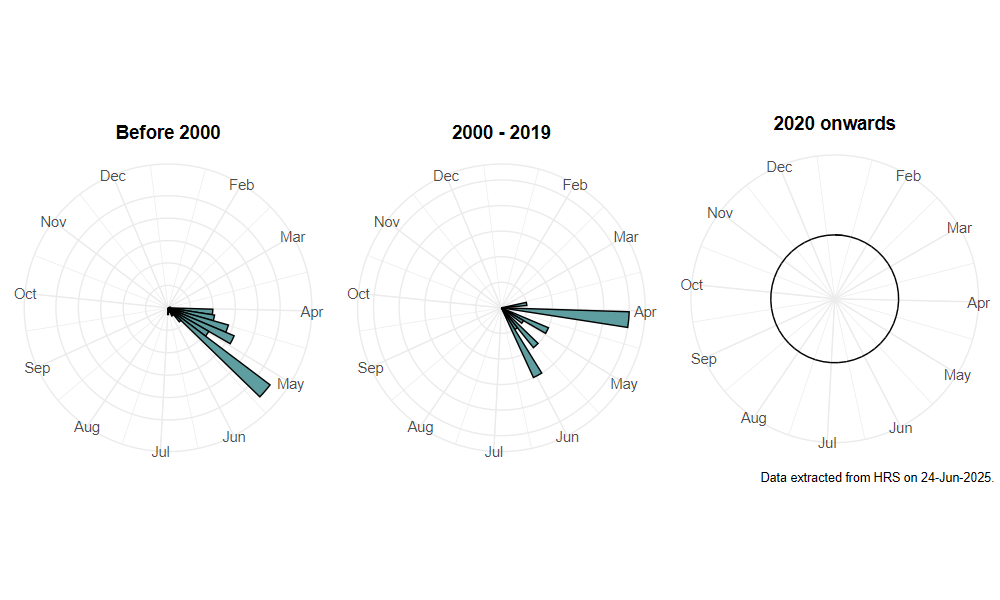Cheilosia semifasciata Becker, 1894
Identification
Identification difficulty = 5. ![]()
![]() according to Ball & Morris, 20241
according to Ball & Morris, 20241
Synonymy
Cheilosia fasciata Schiner and Egger in Coe(1953)2.
Biology
The larva mines the leaves of Orpine Sedum telephium in southern England and Navelwort Umbilicus rupestris in North Wales and Shropshire. The resulting blotch-mines are quite obvious. During its development the larva may occupy and vacate five of six leaves before it reaches maturity. Adults fly rather early in the season, peaking in early May.
Flight period
The following plots show the number of unique records per week excluding those reported to be of immature stages.

Status
Lower Risk (Near Threatened) - Ball & Morris, 20143. Rare (RDB3) - Falk, 19914.
Distribution
C. semifasciata appears to be genuinely confined to North Wales and Shropshire with a few southern outliers even though the foodplats, especially Navelwort, are very widely distributed. The numerous recent records from Shropshire arise from greatly increased recording effort. We cannot tell whether this represents a range extension or the recent discovery of a long-standing population. Searches of the food plant, even in areas where the species is known to occur, reveal that many apparently suitable patches are unoccupied. It seems likely that there are some very specific requirements that need to be met concerning the location and situation of the plant.

-
Ball, S., & Morris, R. (2024). Hoverflies of Britain and Ireland. WILDGuides (3rd ed.). Oxford: Princeton University Press. ↩
-
Coe, R. (1953). Diptera: Syrphidae. Handbooks for the Identification of British Insects, 10(1), 1–98. ↩
-
Ball, S., & Morris, R. (2014). A review of the scarce and threatened flies of Great Britain. Part 6: Syrphidae. ( No. 9). Species status (pp. 1–130). Peterborough: JNCC. ↩
-
Falk, S. (1991). A review of the scarce and threatened flies of Great Britain. ( No. 39). Research and Survey in Nature Conservation (pp. 1–194). Peterborough: NCC. ↩